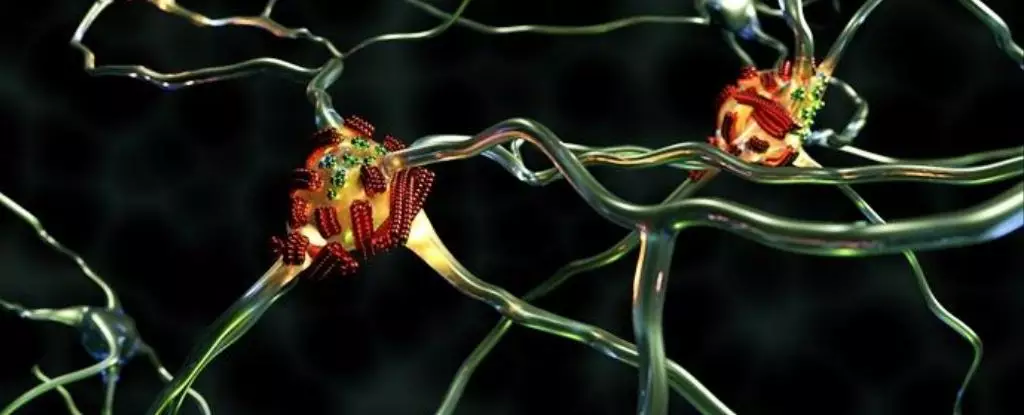Alzheimer’s disease remains one of the most perplexing neurological conditions, challenging scientists and clinicians alike in their quest for understanding and potential treatments. A recent study has brought to light the dynamics of amyloid beta proteins, especially a subset that proliferates at an alarming rate, termed ‘superspreaders.’ This discovery may bridge gaps in our understanding of the disease’s progression, paving the way for innovative therapeutic strategies.
The Discovery of Superspreaders
The research led by molecular physicists, particularly Peter Nirmalraj from the Swiss Federal Laboratories for Materials Science and Technology, introduces a new lens through which to view Alzheimer’s pathology. Using advanced imaging techniques, Nirmalraj and his team were able to monitor how amyloid beta proteins behave in conditions that closely mimic the human brain. The findings suggest that certain structures, specifically amyloid beta 42, engage in a type of ‘superspreading’ that fosters quicker aggregation of protein clumps. This unique behavior could potentially explain why the presence of amyloid plaques escalates as Alzheimer’s progresses.
What differentiates these ‘superspreaders’ from typical amyloid beta proteins lies in their reactivity. Under the gaze of an atomic force microscope for an extensive 250 hours, researchers noted that the edges of amyloid beta 42 were particularly prone to attracting additional protein particles. This characteristic enables these proteins to proliferate at rates that outpace their counterparts, leading to fast-tracked formation of the neurotoxic fibrils associated with Alzheimer’s.
Understanding Amyloid Structures and Their Role
One of the pivotal questions surrounding Alzheimer’s research is whether amyloid beta plaques are the culprits behind neuron damage or merely a byproduct of the disease process. Earlier laboratory studies reported a lack of direct evidence linking amyloid beta aggregation to cellular destruction. However, newer research points to the possibility that the interactions of amyloid proteins—especially when tangled with other molecules—are central to the neuronal damage seen in dementia.
In Nirmalraj’s study, the focus on the natural environmental conditions for observing protein behavior was crucial. Traditional imaging techniques often lead to alterations in the proteins’ morphology, hindering the accurate analysis of their structures in their native forms. This insight emphasizes the need for innovative methodologies in the study of Alzheimer’s pathology that respect the holistic nature of biological systems.
While the implications of identifying amyloid beta 42 superspreaders are significant, the research opens several pathways for future inquiry. Understanding the chemical makeup of these proteins and their interactions could lead to the development of targeted therapies. If the mechanisms governing the proliferation of these proteins can be unraveled, it may lead to interventions that slow down or even halt the progression of Alzheimer’s disease.
Moreover, this study highlights the complexity inherent in Alzheimer’s research. Beyond the amyloid hypothesis—that suggests amyloid fibril accumulation leads to Alzheimer’s symptoms—there exists a web of chemical, structural, and biological interactions that also warrant exploration. For instance, some researchers advocate for the examination of Alzheimer’s disease through the lens of autoimmune theory, positing that the body’s immune response could play a pivotal role in the disease’s progression.
The discovery of amyloid beta 42 as a ‘superspreader’ provides a compelling new angle to understanding Alzheimer’s disease. It reinforces the importance of utilizing cutting-edge imaging techniques that offer better insights into protein behavior within their natural context. As researchers like Nirmalraj and their colleagues continue to peel back the layers of Alzheimer’s complexity, the hope is that these insights will not only contribute to a more profound understanding of the disease but also facilitate the development of more effective treatments. The road ahead is challenging, but with each study, we move closer to unraveling this daunting medical mystery.


Leave a Reply